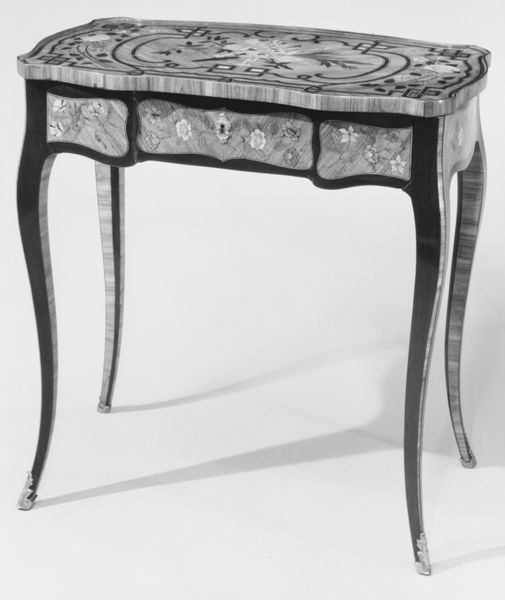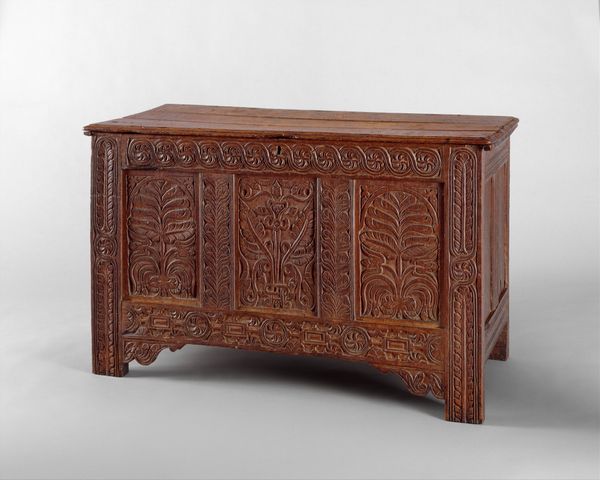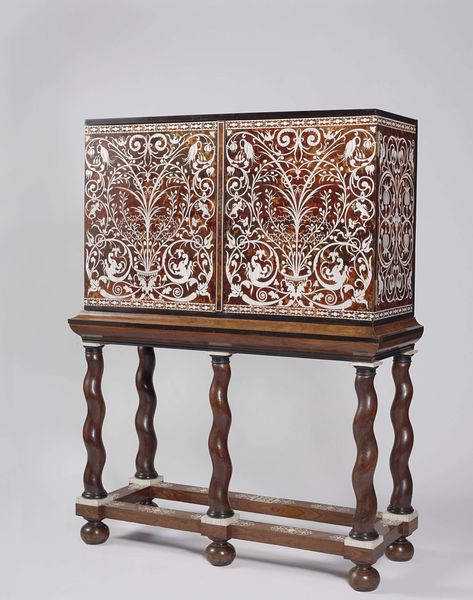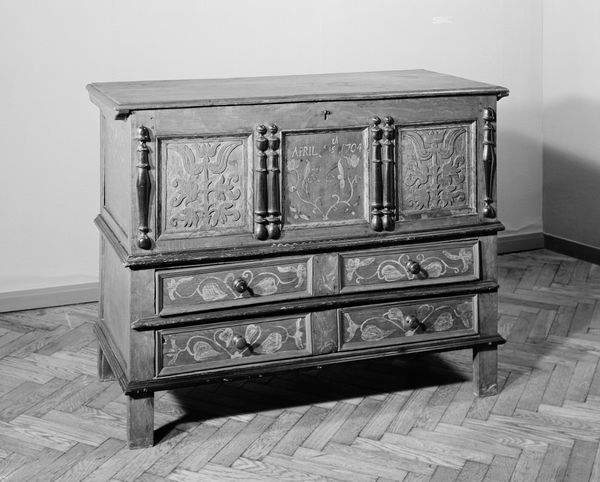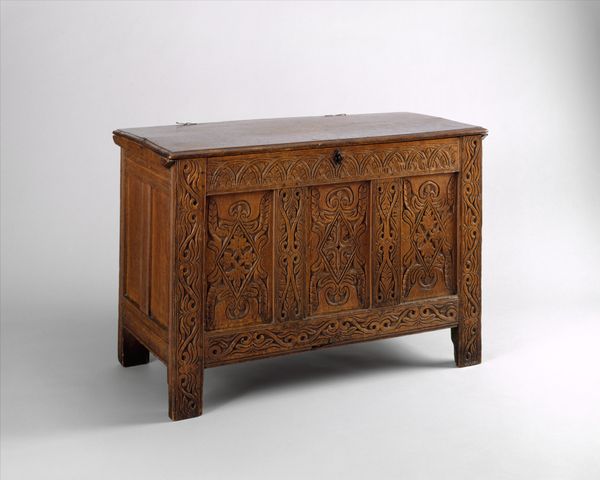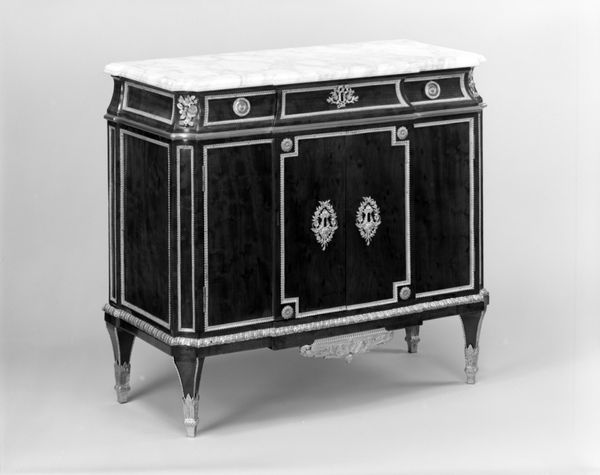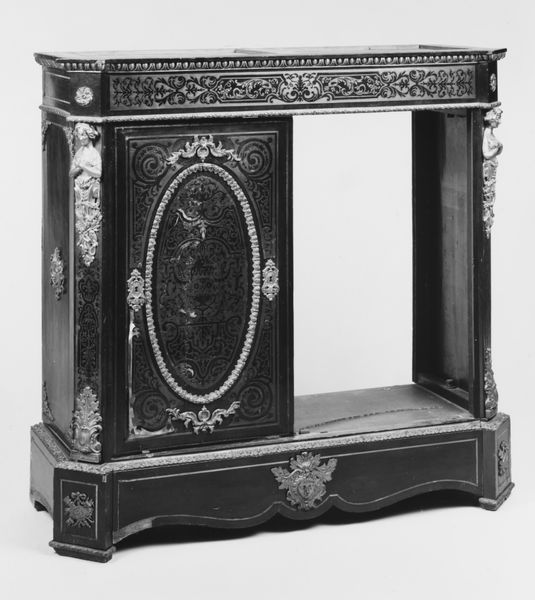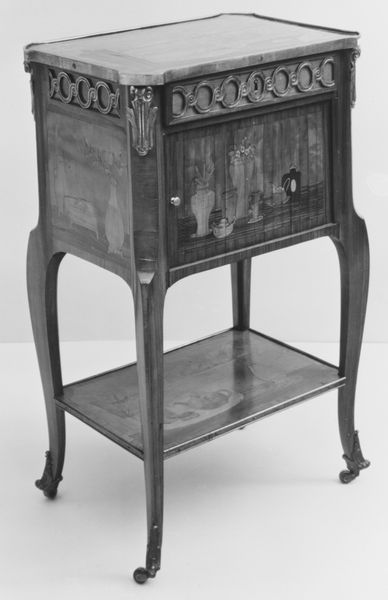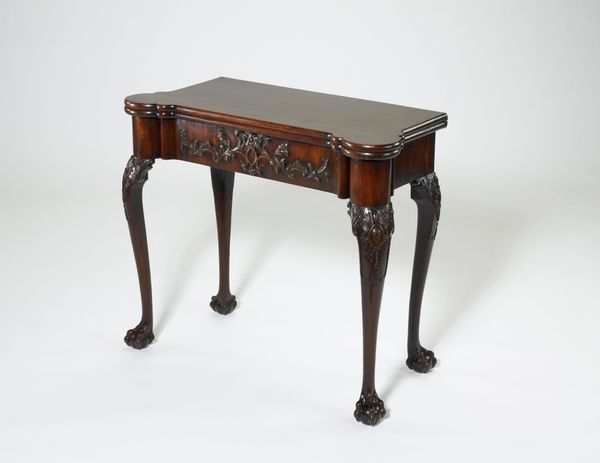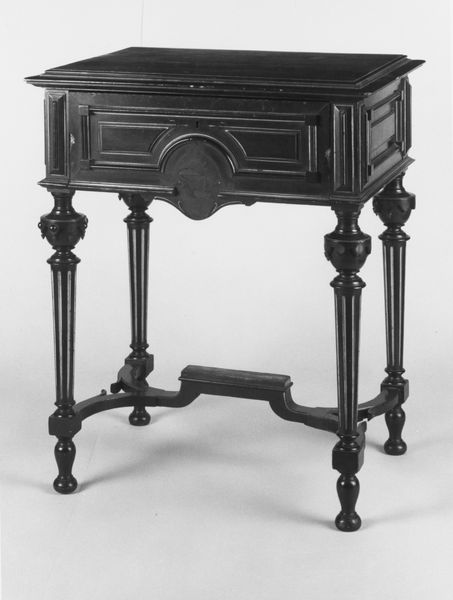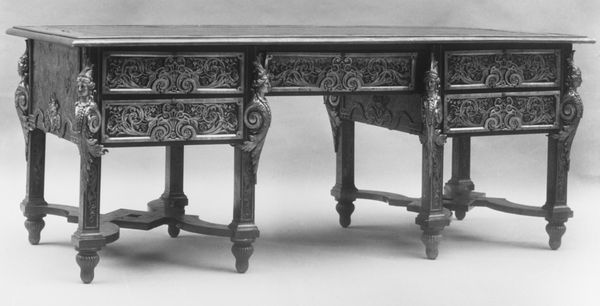
Dimensions: 31 x 16 3/4 x 16 3/4 in. (78.7 x 42.5 x 42.5 cm)
Copyright: Public Domain
Editor: So, here we have Herter Brothers’ “Night Table,” made between 1877 and 1880. It's wood and marble, a striking piece of decorative art currently residing at the Met. The floral inlay seems so delicate. How do you interpret this work in terms of its historical context? Curator: This "Night Table" offers a glimpse into the complexities of the Gilded Age. The Herter Brothers were known for catering to the elite, creating elaborate furnishings that reflected their wealth and status. But consider what that wealth was built upon— often exploitative labor practices and the concentration of power. How do you see this piece functioning within that socio-economic framework? Editor: I guess it highlights the stark contrast between the opulence enjoyed by a few and the realities faced by many. The intricate floral details almost seem like a deliberate distraction from that uncomfortable truth. Curator: Precisely! The aestheticism prevalent during this era can be viewed as both an artistic movement and a social strategy. By emphasizing beauty and craftsmanship, were the Herter Brothers and their patrons attempting to elevate themselves above the perceived vulgarity of industrial capitalism, or were they complicit in masking its injustices? Editor: So the table isn't just a table; it's a symbol of these tensions? It really reframes how I see it, makes me question who this beauty really serves. Curator: Exactly! And consider the gendered aspect of domesticity at the time. Who primarily interacted with such furnishings, and what role did these objects play in reinforcing societal expectations of women and the home? Editor: That's fascinating. I hadn't considered how something so seemingly innocuous could be so loaded with meaning. I definitely have a lot to think about regarding its function and the underlying narratives of power and privilege. Curator: And that’s exactly what engaging with art should do – provoke questions, challenge assumptions, and encourage us to see the world, and its history, from multiple perspectives.
Comments
No comments
Be the first to comment and join the conversation on the ultimate creative platform.
